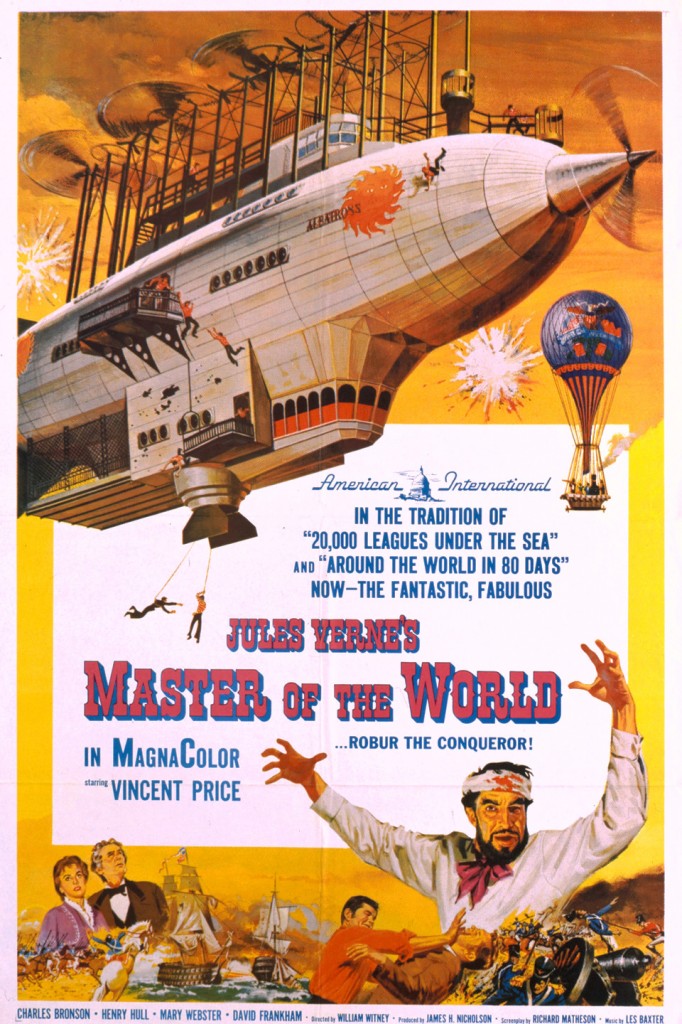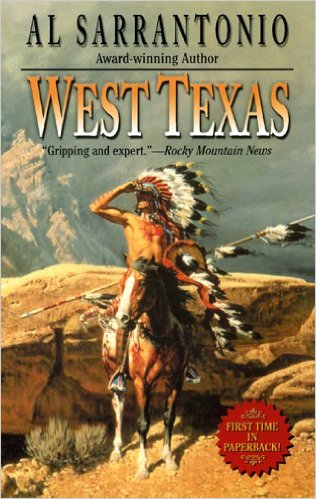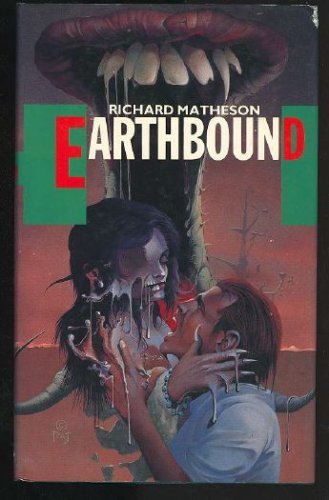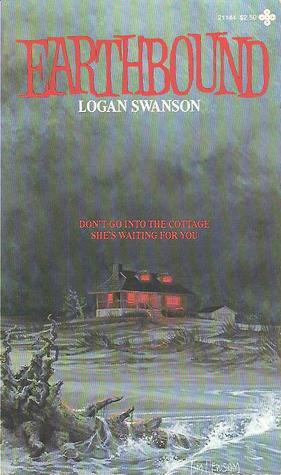By Scott A. Cupp
This is the 165th in my series of Forgotten, Obscure or Neglected Films
What better way to celebrate Memorial Day than to watch Vincent Price try to stop war across the globe?
Back in 1961, I was still in the Fairbanks, Alaska, area on one of the military bases when I first heard about Master of the World, a film combining two Jules Verne novels into a cinematic masterpiece. I knew a little about Verne and some about Vincent Price and that was about it. The art and craft of moviemaking and cinematic quality were things beyond my comprehension at the time.
Fortunately, I never got to see the film in 1961 — or ever — until this morning. I had taped it a couple of weeks ago from Turner Classic. (How I miss that channel right now when I have no television in my Alpine apartment!)
This one is not one of the good Price movies, not one of the Poe films or the like. It has a Richard Matheson script (that’s the good part). It has Vincent Price, Charles Bronson and Henry (Werewolf of London) Hull! But, boy, does the story suffer!
What we have here is an American International attempt to cash in on 1954’s 20,000 Leagues Under the Sea and 1956’s Around the World in Eighty Days. But, being American International, they wanted to do this big epic story on a shoestring budget. According to Wikipedia, this was AI’s largest budget film to date, but it still came out as a B-film on a double bill with Konga.
Part of the problem may stem from the source material. Matheson worked with two Verne novels Master of the World and Robur the Conqueror. In the annals of great Verne titles, these are not the books you pick. Essentially, you have the peace message of Captain Nemo from 20,000 Leagues and its sea setting moved into the air, where the marvels are sorely lacking. No lost cities or giant squids up in the clouds. Just another mad captain trying to bring nations to peace by using the force he abhors.
Our story deals with Mr. Prudent (Hull), a Pennsylvania arms manufacturer; his daughter Dorothy (Mary Webster); her fiancé Phillip Evans (David Frankham); and US government agent John Strock (Bronson). Together, they are investigating strange noises, explosions and Biblical pronouncements from a vast mountain known as the Great Eyrie. Since the mountain cannot be scaled, they investigate via balloon, which is mysteriously shot down.
The group awakens aboard the Albatross, a huge flying contraption with many overhead propellers that provide lift and a rear propeller used from propulsion. It is commanded by the impressive Robur (Price) who calls no country home. It is his intention to get every country to give up war or suffer consequences.
They fly through the air with great ease and never appear to land. When they take on water, it is via a giant siphon hose. Phillip attempts to interfere with Robur’s plan and finds himself (and later Bronson) dangling from the ship at the end of a fraying rope.
I really wanted to like this film, but I can’t do it. According to Wikipedia, Price was very proud of his role. But he plays it a little heavy handed for me. Bronson is used as a romantic love interest for the already engaged Dorothy, eliciting some jealous posturing from Phillip. There are also a couple of “humorous” scenes involving cook Topage (Vito Scotti, absolutely abused, wasted and not funny).
But where the film really suffers is in the special effects. Yes, it is 1961. But still, the matte work is quite rough. The miniatures are pretty cheesy and the film uses a fair bit of stock footage. Where Nemo had underwater scenes, all Robur gets are shots of clouds and blue skies in his cockpit view. Very dull stuff.
As I indicated above, it’s really a cheap second cousin to 20,000 Leagues, and you would be better served watching it instead. But, of course, you may have loved this film in 1961 and found it to be hugely influential on your world view and cinematic experience. In that case, I salute you. My mileage varied.
Series organizer Todd Mason hosts more Tuesday Forgotten Film reviews at his own blog and posts a complete list of participating blogs.




